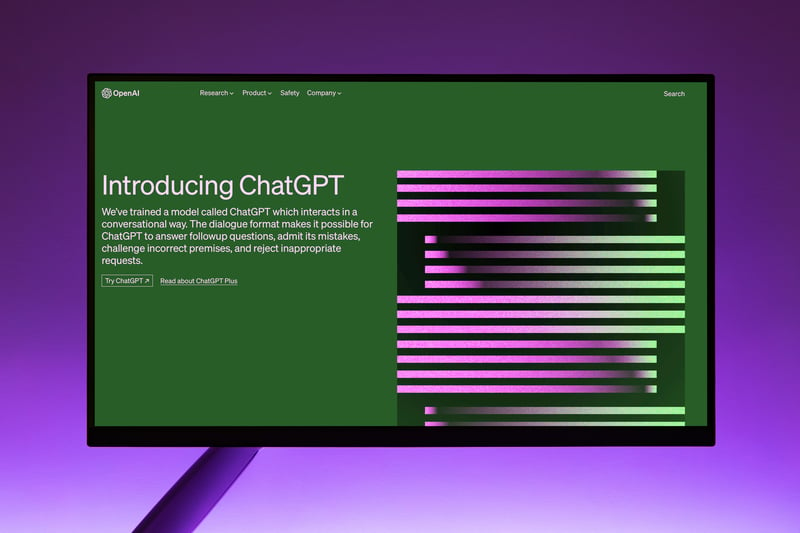Similar to legal malpractice suits, uncovered medi...
 Just as technology is transforming other industries, the top trends in insurance technology are reshaping a new normal in commercial insurance. New technologies set the stage for new operating models that change the status quo for processes, employees, and customers.
Just as technology is transforming other industries, the top trends in insurance technology are reshaping a new normal in commercial insurance. New technologies set the stage for new operating models that change the status quo for processes, employees, and customers.
Insurtech, embedded insurance, predictive analytics, and ChatGPt are some of the top trends in technology that are paving the way for increased efficiency and profitability which will benefit every part of the distribution channel.
Advancements are continually being made in insurance technology. New products and technologies are coming into the marketplace before insurance professionals have had sufficient opportunities to utilize the existing tools optimally. It’s a good problem to have, and it’s an exciting time in the insurance industry.
Here is a bit about the emerging trends and technologies in commercial insurance:
What is Insurtech? Insurtech is a broad term that describes innovative uses of technology that improve efficiency in the insurance industry. According to EY, “the Insurtech market is maturing rapidly with a growing diversity of capabilities and business models”. EY also highlights the increased interest in investing in Insurtech by noting the following investment trends:
Insurtech is changing the face of insurance across all areas of insurance including claims, customer service, underwriting, marketing, sales, and product design.
Embedded insurance has emerged as insurance companies look for new and innovative ways to market their products. Embedded insurance is triggered when a user purchases a product or service from a third party.
An example of embedded insurance is a travel agency offering travel insurance as a feature of their service. Another notable example of embedded insurance is Airbnb Aircover which offers rental liability and damage protection for home hosts when they list their homes on the platform.
Embedded insurance is possible through a technology called open API (application programming interface), which allows software developers to access features of other software programs.
By embedding their insurance products into other sites, insurance companies gain exposure to their primary audiences.
While embedded insurance works on the front end, predictive analytics programs work behind the scenes collecting major amounts of data from a wide variety of resources.
Specifically, insurance professionals can use predictive analytics in the following applications:
A WTW report shows that 67% of insurance companies have experienced a reduction in expenses while leveraging predictive analytics.
Overall, advancements in AI and machine learning are giving insurance companies and agents data they can use to make better decisions in underwriting, claims, core processes, customer service, and more.

The newest player in technology for insurance is ChatGPT, a cutting-edge technology that changes the way insurance agencies interact with their customers. In essence, ChatGPt is a natural learning processing (NLP) technology that enables customers to interact with a company in a natural conversation where they hear a human-sounding voice.
Here are some of the ways insurance professionals are leveraging ChatGPT:
McKinsey reports that insurance agencies could automate up to 10% to 55% of insurance functions by 2030.
While individual technologies have an impact in certain areas of commercial insurance, their collective impact will surely change the course of commercial insurance over the next decade, and perhaps, beyond.
For example, McKinsey research shows that claims processes cost insurance companies 50% to 80% of their revenue from insurance premiums. Emerging technologies have the potential to reduce those percentages significantly.
Insurance companies stand to save even more by utilizing technology to reduce insurance fraud. The FBI reports estimate insurance fraud at over $40 billion annually, impacting Americans with higher premiums. The impact costs average Americans between $400 to $700 in additional insurance premiums.
Insurance agents and claims adjusters spend many hours emailing and on the phone with customers daily. The right technologies automate routine answers and requests, freeing up countless hours of customer service time.
At the end of the day, the trend in commercial insurance is to leverage technology in ways that focus on efficiency, risk management, and profitability in virtually every area of the business.
These goals are timely considering insurance companies and agencies are contending with the rising cost of inflation and an uptick in claims costs.
Without a doubt, the future of commercial insurance is rapidly evolving. The trends and technologies are paving the way for a positive future for the commercial industry.
To learn more about insurance technology, contact one of our licensed insurance representatives at the Leap Carpenter Kemps insurance agency and ask for a quote for your insurance needs. Contact us at 209-384-0727 today!
Similar to legal malpractice suits, uncovered medi...
You get all the benefits and advantages of being a...
Natural disasters and crimes can impact a business...
Leap | Carpenter | Kemps Insurance Agency provides Commercial Business Insurance, Employee Benefits, Life and Health Insurance, and Personal Insurance to all of California, including Merced, Atwater, Los Banos, Mariposa, Madera, Fresno, Modesto, Turlock, and Stockton.
CA License Number 0646081 | Licensed to do business in California, Arizona, Hawaii, Idaho, Montana, Nevada, North Carolina, Oklahoma, Oregon, Virginia, West Virginia and Washington.
© Copyright 2023 Leap | Carpenter | Kemps Insurance Agency — Privacy Policy | Terms & Conditions.
Merced Office
3187 Collins Drive
Merced, CA 95348
Phone: (209) 384-0727
Additional Contacts
Toll Free: (800) 221-0864
Fax: (209) 384-0401